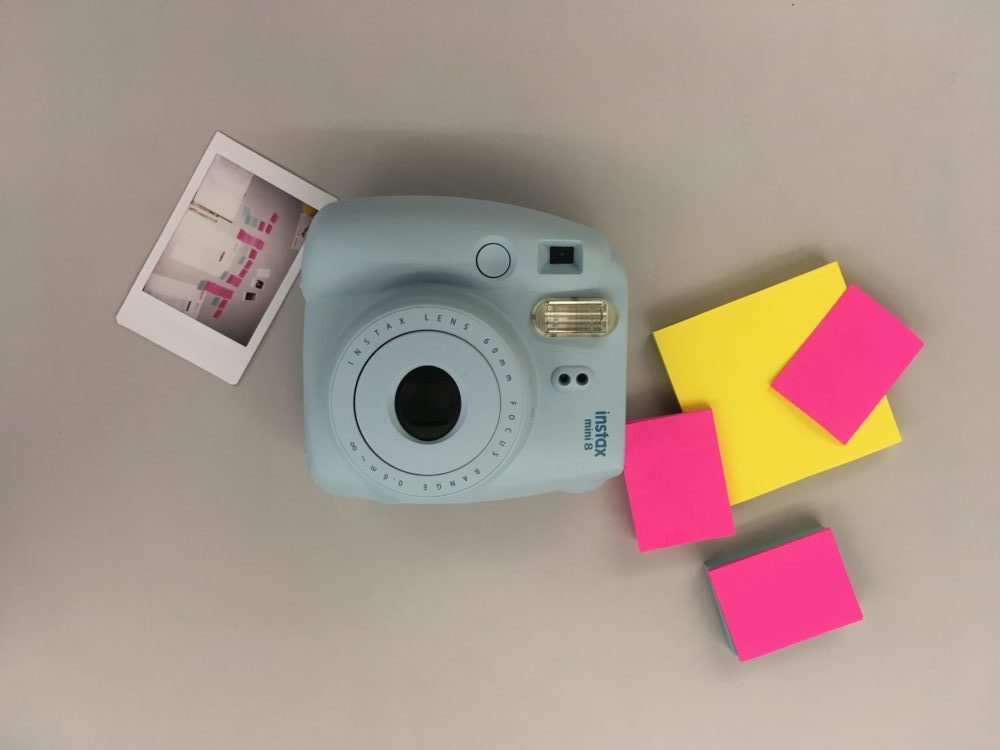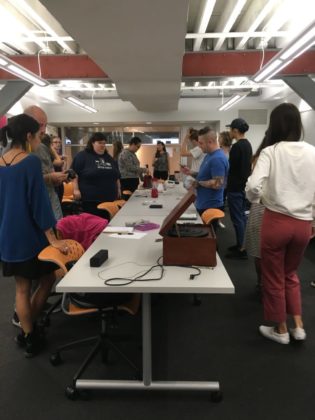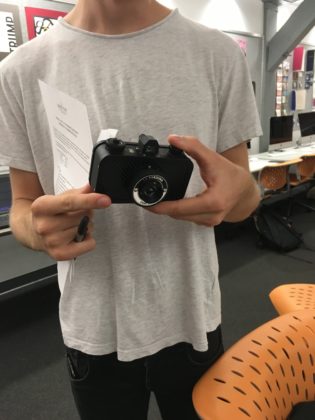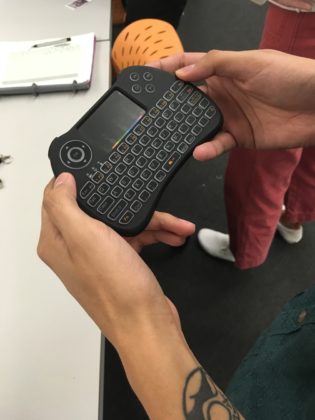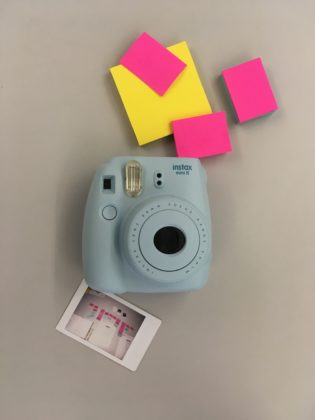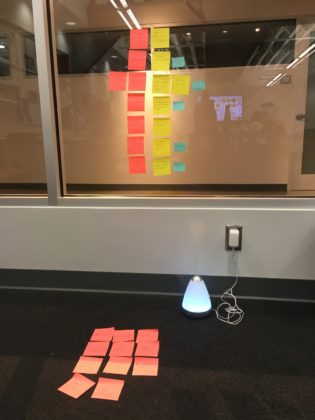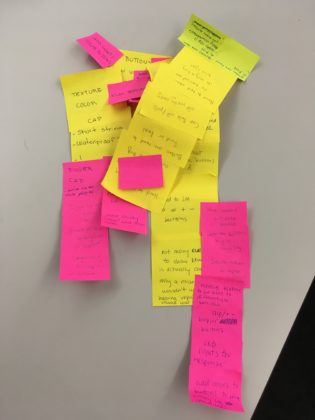Each of the five groups presented their products, problems and proposed solutions using the research they did over the past week on personas, accessibility studies and user journeys.
Fujifilm Instax Mini 8 Polaroid presented solutions such as a more evident shutter and on-off button, and centred view-finder and a wider range of colors to better engage their millenial target group.

Sparoom oil diffuser created a more compact solution and highlighted accessibility issues that they addressed in their presentation.

Photive Hydra waterproof, portable bluetooth speaker went through their user journeys highlighting the need for less texture on their product for people with low vision to be able to feel the symbols for the volume buttons.

Hamilton Beach blender went through their personas as being more family-oriented and an older audience, and created a product for easier wrist movement.

Razer gaming headphones opted for a wireless solution, with extruded braille parts to provide their users with a more expressive gaming experience.
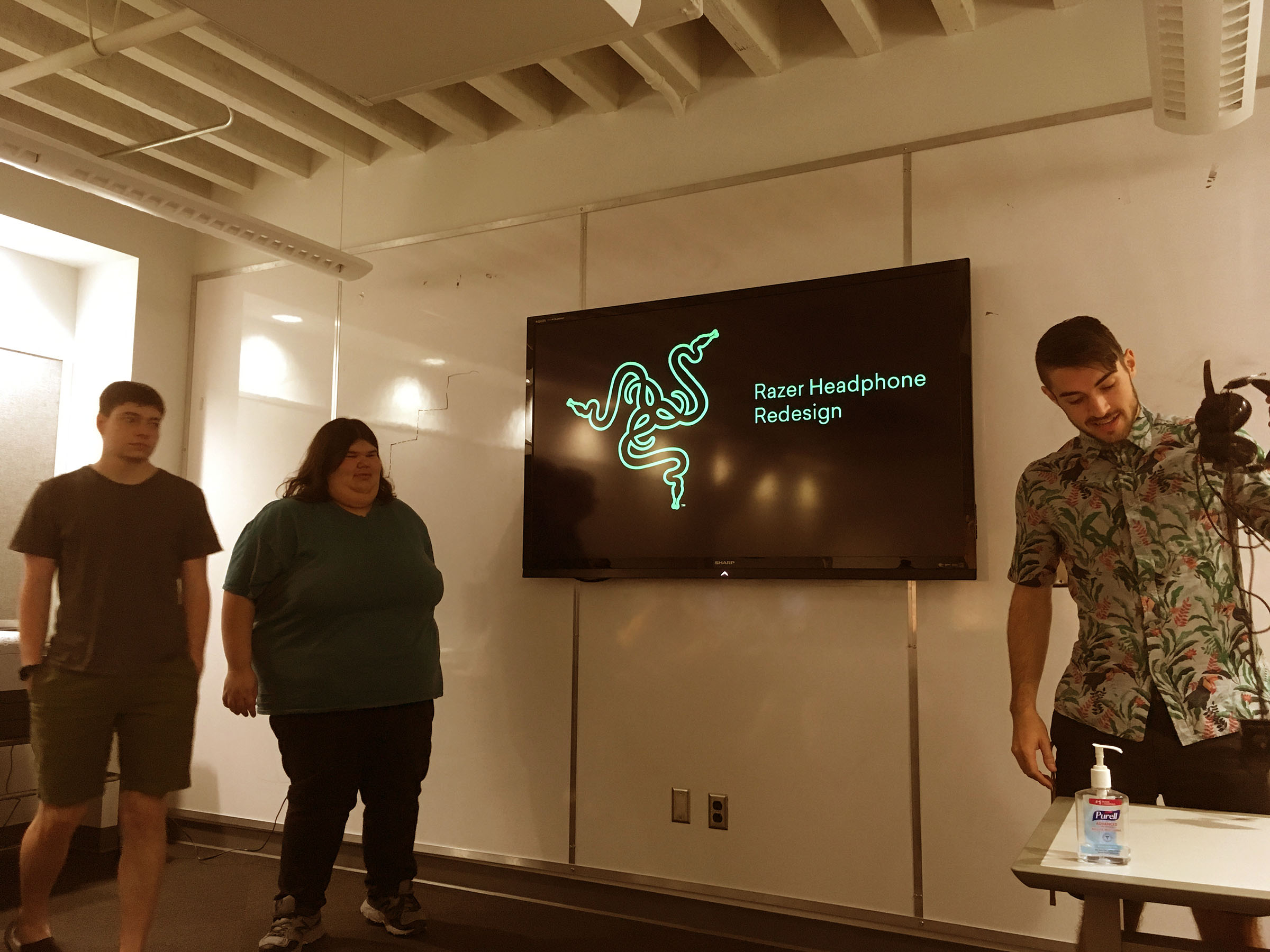
Each five minute presentation was followed by feedback from the rest of the class on how to enhance the solutions they provided, as well as organise their presentations better.
_____________________________________________________________________
Exercise Two – Game
After completing the first exercise, students took out board games (that they were asked to bring after the previous class). Groups formed organically as students interacted with games, and the rest of the class period was used to play these games and understand how physical games work, so that they could begin thinking about creating a digital interface for the same games.


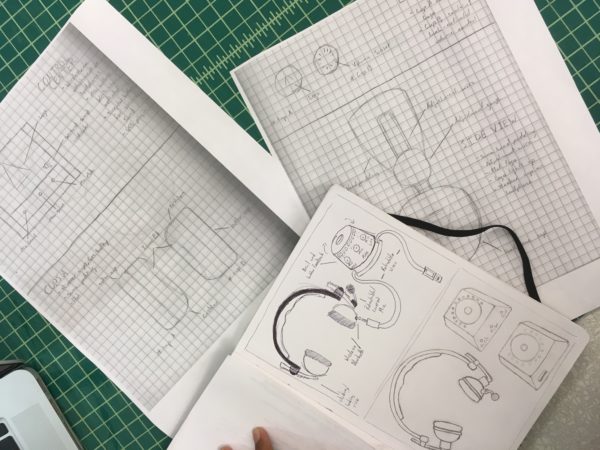
 Students were asked to go over Part 3 of the first assignment individually, and came into class sharing the ideas they came up with and the sketches they created over the weekend. Each group moved forward with one persona based on a real person.
Students were asked to go over Part 3 of the first assignment individually, and came into class sharing the ideas they came up with and the sketches they created over the weekend. Each group moved forward with one persona based on a real person.